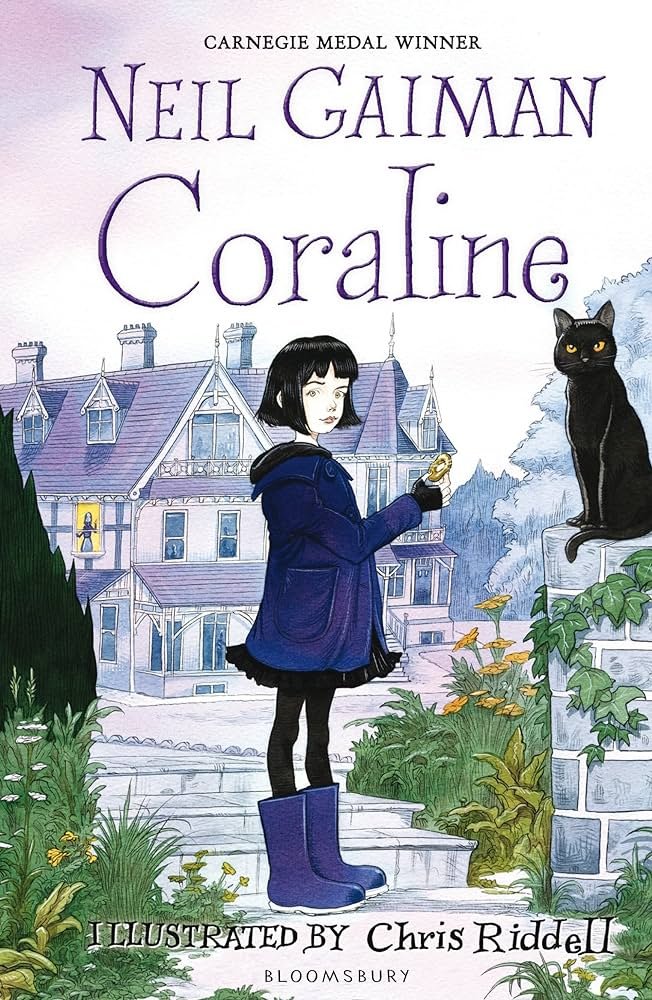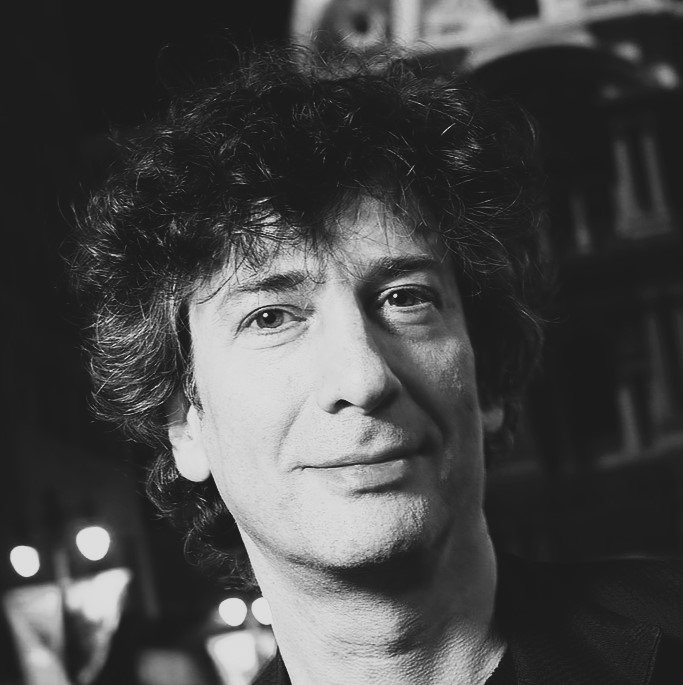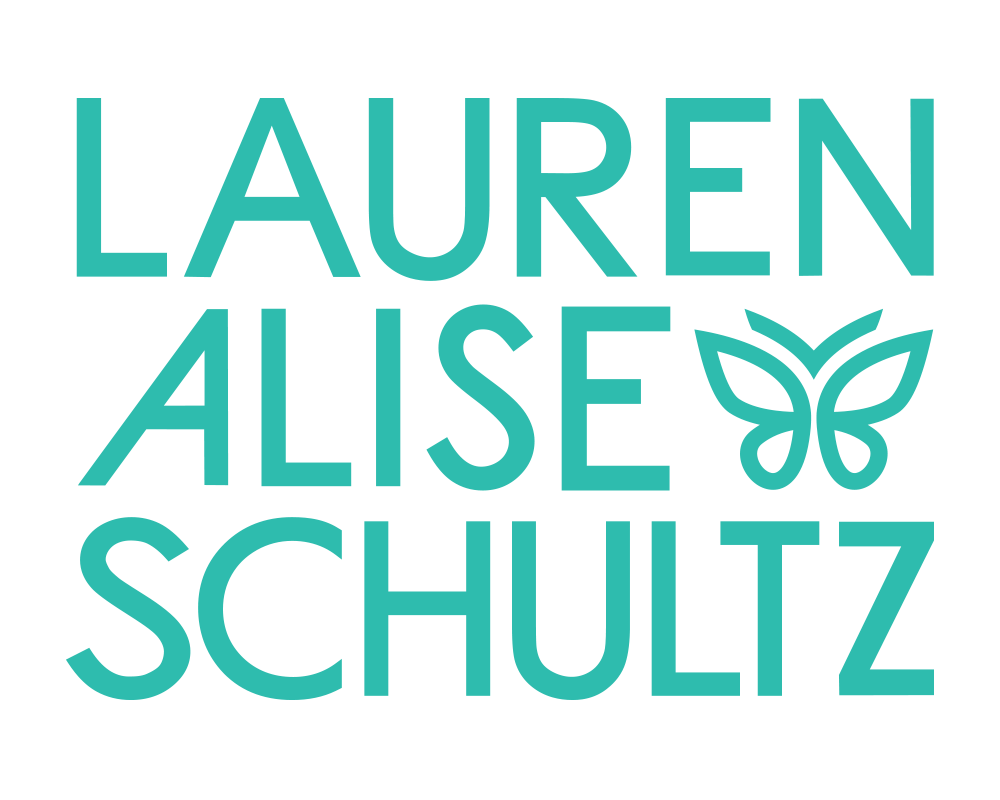Having enjoyed the Newbery-winning The Graveyard Book by Neil Gaiman, I was excited to check out Coraline, his other children’s novel. Coraline was awarded the 2003 Hugo Award for Best Novella, the 2003 Nebula Award for Best Novel, and the 2002 Bran Stoker Award for Best Work for Young Readers. This book should be a good one.
But as I read through the first fifty pages or so, I found myself feeling a little disappointed. The story is cute enough, but the prose isn’t as clever as in The Graveyard Book. One of my favorite aspects of that novel is that Gaiman often cleverly identifies the cemetery residents by their full tombstone inscriptions (“Miss Letitia Borrows, Spinster of this Parish, Who Did No Harm to No Man all the Dais of Her Life. Reader, Can You Say Lykewise?” for example). It’s touches like that which help to make The Graveyard Book such an entertaining read, and I was expecting to encounter another shining example of Gaiman’s wit. Unfortunately, the prose of Coraline lacks that sense of unique whimsy.
Also to my dissatisfaction, at first I felt as though I were reading a copycat version of Alice in Wonderland. Gaiman’s story begins very similarly and there’s even a talking feline who made me think of the Chesire Cat. Instead of going down a rabbit hole, Coraline opens a door in her family’s flat that supposedly leads into the empty flat next door, but finds that it is actually a portal to a mirror universe. There, everything is a little bit more fantastic than in the world that Coraline comes from, but also a little bit distorted and a little too contrived.
Although I was somewhat disappointed that Gaiman’s writing was not as clever in Coraline as in The Graveyard Book, I found this mirror universe to be interesting enough to keep reading. When she first walks through the passageway between flats, Coraline discovers her “other mother” and “other father” living in a flat nearly identical to her own home. Nearly identical, but not quite. Coraline’s “other parents” have prepared everything in their flat so that the meals, toys, and activities are geared toward pleasing and entertaining a child. Coraline’s other mother and father apparently want to adopt her for their own (there isn’t “an other” Coraline”) and are willing to give Coraline anything she would like that would make her happy. Or at least anything that they think will make her happy.
At first this seems appealing to Coraline, but then she starts thinking differently than the average child, a pattern in Children’s Literature meant to empower the reader to think for themselves. She makes a rather tiresome, didactic-sounding speech, informing her other Mother: “I don’t want whatever I want. Nobody does. Not really. What kind of fun would it be if I just got everything I ever wanted? Just like that, and it didn’t mean anything.” In moments like these, Coraline seems a little bit too much like a cookie-cutter “independent thinker” character to be a fully satisfying character.
But ultimately, I’m willing to forgive the somewhat trite aspect(s) of the novella because once the mirror world is revealed to be essentially a Spider’s web, a trap for children, the story takes a more interesting turn. Welcome to Alice in Wonderland meets The Nightmare Before Christmas.
Coraline discovers that her “other mother” has tried to lure other children into her home before, revealing the dark underbelly of the Other Universe. Apparently some of these poor children have been locked in the closet until they withered away. All that’s left of them are faint wisps of their souls, but Coraline is determined that she will not meet the same fate. With the help of the talking cat, she challenges her other mother to a game that will allow her to earn her freedom. Coraline undertakes a treasure hunt and has several adventures that require her bravery and resourcefulness before order is restored and the story comes to a close. Throughout all of this, Gaiman’s novel struck me as something of a mish-mash of Children’s Literature tropes, but they are combined fairly well so that Coraline is both cute and creepy. The novella is an interesting precursor to The Graveyard Book, certainly entertaining, even though I didn’t find it quite as absorbing as I feel like it could have been. And apparently many people disagree with me, since the novel won several prestigious awards for Sci-Fi and Fantasy Literature. I recommend checking it out to decide for yourself.



This website was created with a lot of love, Coke Zero, and tacos by Kumquat Creative.